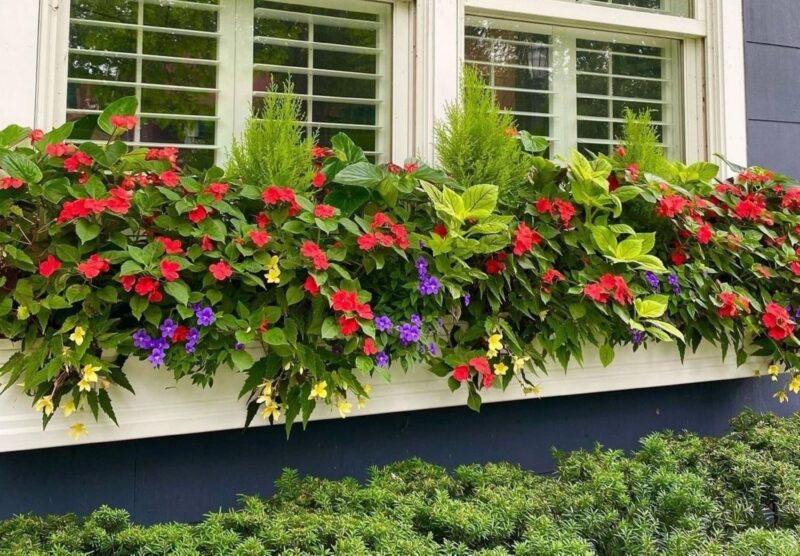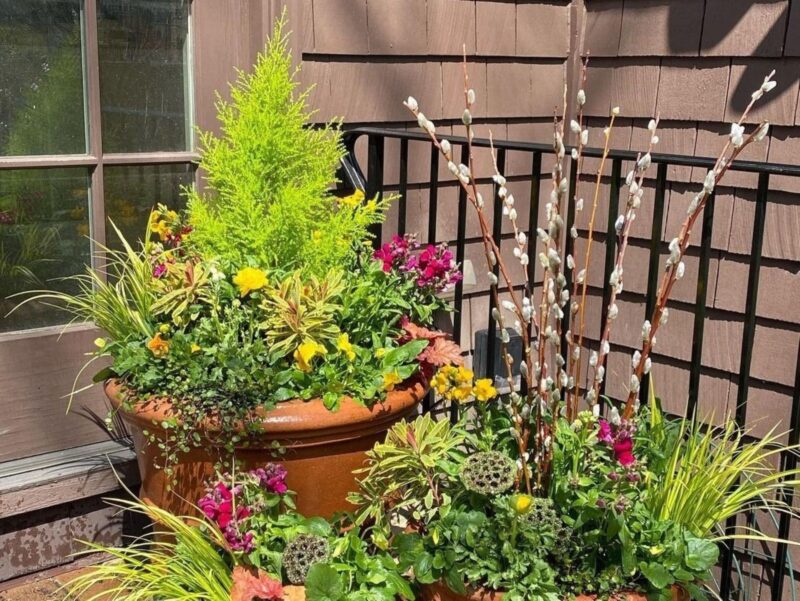Keep green thumb year-round with container gardening
With cooler temperatures upon us, we have to say goodbye to our beautiful summer annuals. However, with container plantings, you can continue to garden throughout the year.
A four-season container allows you to move easily into the next season with a few simple updates. By choosing a woody ornamental as the focal point (thriller), this is easily achieved. As the seasons change, keep the thriller, but add new plant material (fillers and spillers) to provide bursts of color, added texture and form.

Just be aware that, when planting woody ornamentals or other perennials that remain above ground over the winter, the root systems may be more vulnerable due to the freezing and thawing effect we typically see now in Vermont winters as a result of climate change. It is this freezing and thawing that is most damaging to the roots.
When choosing plant material, consider your U.S. Department of Agriculture plant hardiness zone (planthardiness.ars.usda.gov), light and watering requirements. Some plants may have multi-seasonal appeal and can be left through many seasons, while others will no longer add seasonal interest.
Next, consider the container. Think big!
You will need enough room around your small, slow-growing evergreen or deciduous shrub to add plants from season to season. Avoid terracotta pots, as clay expands and contracts with different temperatures and will crack in the cold.
Designing a four-season container garden around a living evergreen or shrub ensures never-ending color throughout the year. Container planting does not provide the same insulation as planting in the ground. Therefore, when choosing a shrub, look for one with a hardiness zone that is one to two zones colder than where you live to ensure overwintering.
Evergreens such as dwarf Alberta spruce (zones 2-7), emerald petite arborvitae (zones 3-7), Blue Arrow Juniper (zone 4) and Chamaecyparis (zones 4-8) make excellent thrillers. I have used blueberry bushes, which are striking and unique three-season plants and have decorated these with lights once they dropped their leaves.
Red sprite winterberry, with its stunning red berries in winter, is another option. However, this plant is only a possibility if you have two containers, as both a male and female plant is needed to produce berries.
As the seasons change, plants lose their luster or you may just want to change it up for variety. Removing and adding new plant material is simple.
One thing to keep in mind when adding plants in fall is to utilize well-established plants since the growing season has slowed considerably. I like to use hardy perennials from my own gardens, such as hosta, ferns, heuchera and ornamental grasses with splashes of color from pumpkins, gourds, ornamental kale and mums.
Creating a winter container can be as simple as removing fall plants before the potting soil freezes and placing lights on your shrub, or adding greenery, red twigs, berries and other decorations.

Once you have added winter interest material, moisten the soil and allow it to freeze. This will ensure that limbs, twigs and other decorations remain in place.
Spring and summer are exciting times for gardening. Be sure to check the frost dates for your region, and always start with the hardiest plant material to ensure it survives Vermont’s spring temperature fluctuations.
A few great choices for spring fillers are hellebores, pulmonarias, pansies, lobelias and marguerite daisies. When to make the transition from spring to summer is entirely up to you.
With an array of colors, textures, shapes and smells, creating a beautiful summer showpiece will be sure to evoke a sense of joy and satisfaction. For a shady spot, consider combining polka dot plant with a spider plant and begonias or tradescantia.
Fillers such as salvia, lantana and other upright flowers work well with trailing scaevola, sweet alyssum and other spillers for a sunny location. Or go tropical with hibiscus, crotons or caladiums.
Four-season container gardening can be started in any season. Just choose your design, collect your plant material and have fun creating your masterpiece.
(Pamm Powers is a University of Vermont Extension master gardener intern from Shaftsbury.)

